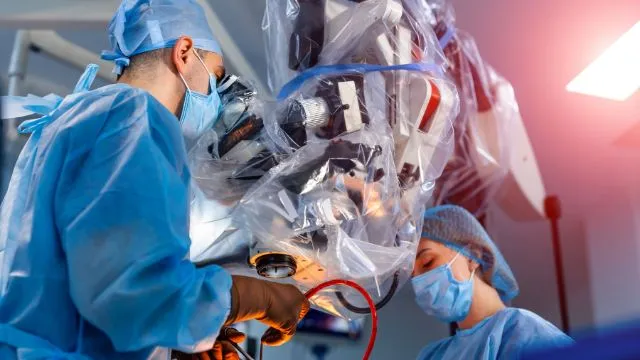In recent years, robotics has made significant strides in various fields, and one area that has benefited immensely is heart surgery. Traditional heart surgeries are highly complex and require precision and expertise, whether that’s mitral valve regurgitation or installing pacemakers. However, with the introduction of robotics, surgeons now have access to advanced tools and technologies that enable them to perform intricate procedures with enhanced precision and improved patient outcomes. Below, we will explore the role of robotics in advancing heart surgery and its potential to revolutionize the field.
Enhanced Precision and Accuracy

Robotic-assisted heart surgery provides surgeons with a level of precision and accuracy that surpasses traditional surgical methods. Robotic systems utilize advanced imaging and navigation technologies, enabling surgeons to visualize the patient’s heart in real time with exceptional clarity. This enhanced visualization allows surgeons to precisely plan and execute complex procedures, such as coronary artery bypass grafting and valve repairs, with greater accuracy. The robotic arms used in these surgeries can make precise, steady movements, minimizing the risk of human error and improving surgical outcomes.
Minimally Invasive Approaches
One of the significant advantages of robotics in heart surgery is the ability to perform procedures using minimally invasive techniques. Minimally invasive surgery involves smaller incisions compared to traditional open-heart surgery, resulting in reduced trauma, shorter hospital stays, and faster recovery times for patients. Robotic systems facilitate this approach by providing surgeons with smaller, more flexible instruments and a three-dimensional view of the surgical site. With improved dexterity and manoeuvrability, surgeons can access hard-to-reach areas of the heart while minimizing tissue damage, leading to improved patient comfort and reduced postoperative complications.
Telemanipulation and Telesurgery
Another exciting aspect of robotic-assisted heart surgery is the potential for telemanipulation and telesurgery. Telemanipulation allows surgeons to remotely control robotic instruments from a console, providing the opportunity for expert surgeons to perform procedures on patients located in distant locations. This capability is particularly beneficial in areas where specialized cardiac surgeons are scarce. Telesurgery takes this concept further by enabling a surgeon to perform a procedure on a patient located in another part of the world. By utilizing high-speed internet connections and robotics, this technology holds immense promise for expanding access to advanced cardiac care globally.
Reduced Trauma and Faster Recovery
Robotic-assisted heart surgery offers numerous benefits to patients, including reduced trauma and faster recovery times. The smaller incisions used in these procedures result in less blood loss, reduced pain, and decreased scarring. Patients undergoing robotic heart surgery often experience shorter hospital stays and quicker return to normal activities compared to traditional surgery. This advancement not only improves patient satisfaction but also has a positive impact on healthcare systems by freeing up hospital resources and reducing costs associated with prolonged stays.
Continuous Advancements and Future Potential
The field of robotics in heart surgery is continually evolving, with ongoing advancements and refinements in technology. Researchers and engineers are working to develop even more sophisticated robotic systems that offer enhanced capabilities, such as haptic feedback and improved imaging. These advancements have the potential to further enhance surgical precision and expand the scope of robotic-assisted procedures in heart surgery. As technology continues to progress, robotic systems may become increasingly integrated into cardiac care, enabling surgeons to achieve even better outcomes for their patients.
The role of robotics in advancing heart surgery cannot be overstated. The precision, accuracy, and minimally invasive nature of robotic-assisted procedures have revolutionized the field, improving patient outcomes and expanding access to advanced cardiac care. With ongoing research and technological advancements, the future holds immense potential for further integration of robotics in heart surgery.
Santosh Kumar is a Professional SEO and Blogger, With the help of this blog he is trying to share top 10 lists, facts, entertainment news from India and all around the world.
